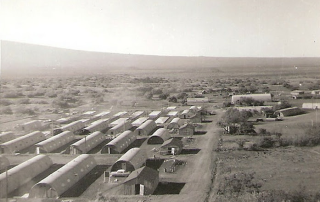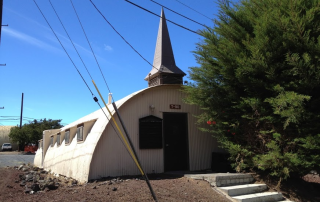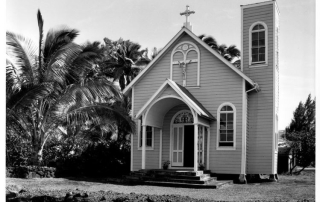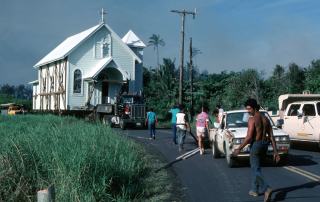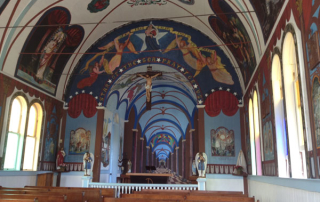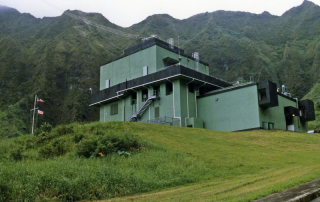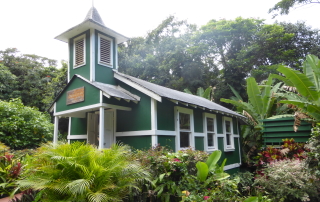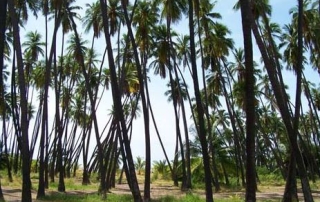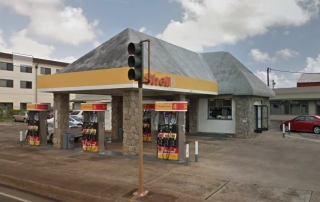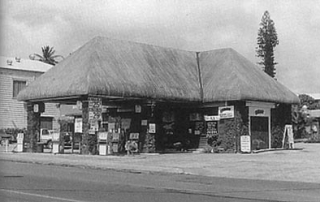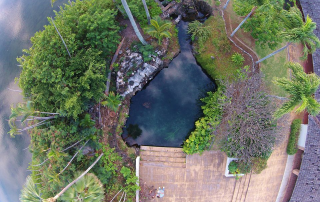Pohakuloa Training Area Quonset Huts (2015)
Photography: Courtesy of USAG-HI Directorate of Public Works Article Written By: Loren Moreno, HONOLULU Magazine What is it? Quonset huts were designed during World War II as easy-to-assemble, temporary buildings that could be broken down and reassembled quickly. Many of the more than 100 huts at the Pōhakuloa Training Area were constructed during the 1950s and reportedly contain the only Quonset-hut chapel in the Army. The state says they make up one of the last remaining groups of huts still in use in the U.S., and it’s probable their materials were used on other military bases prior to coming to Pōhakuloa. What threatens it? The Army is looking into demolishing the huts, which are corroded and no longer meet Pōhakuloa’s requirements. “From an engineering perspective, we don’t believe they’re repairable,” says Sally Pfenning, director of Public Works for the U.S. Army Garrison Hawai‘i. “They were never meant to be permanent.” The huts may qualify for listing on the National Register of Historic Places because the type of structure is associated with World War II, but, in that case, only a few huts would need to be preserved. What can be done? Pfenning says the Army is currently going through the legal process with the state Historic Preservation Division, Historic Hawai‘i Foundation and other partners to see if the huts are eligible for the register. Within the next six months there will be a public comment period for the proposed changes. However, most of the huts were used as Cold War-era housing; a loophole in the National Historic Preservation Act requires the Army must take comments into consideration, but is not obligated to formally resolve them. To preserve the huts, some alternatives to demolition may be: Move them to another area, reevaluate the treatment of Cold War-era housing review or reevaluate to which era the huts truly belong.


